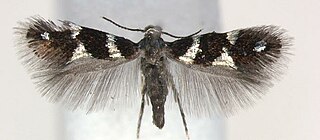
The Heliozelidae, commonly known as shield-bearer moths, are a family of small, day flying monotrysian moths distributed worldwide. The larvae of most heliozelid species are leaf miners who cut distinctive shield-shaped cases from the surface of the host leaf, hence the common name. Some species are considered pests of commercial crops such as grapevines, cranberries, and walnuts. The taxonomy of this family is poorly understood.
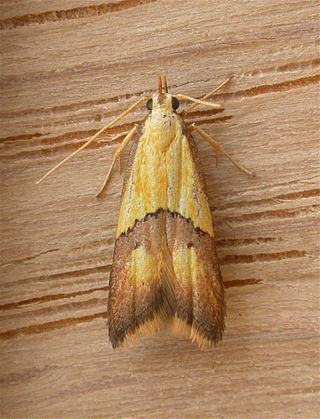
The Lecithoceridae, or long-horned moths, are a family of small moths described by Simon Le Marchand in 1947. Although lecithocerids are found throughout the world, the great majority are found in the Indomalayan realm and the southern part of the Palaearctic realm.

Aristotelia is a genus of moths in the family Gelechiidae. Well-known species are food plant specialists, and diverse hosts are used – Salicaceae, Solanaceae, Rosaceae, Fagaceae, Fabaceae, Asteraceae.

Helcystogramma is a genus of moths in the family Gelechiidae. The genus was erected by Philipp Christoph Zeller in 1877.

Megacraspedus is a genus of moths in the family Gelechiidae, found primarily in the Palearctic.
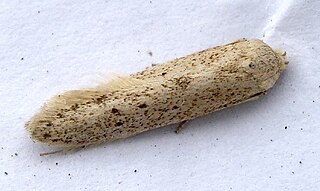
Blastobasis is the type genus of the gelechioid moth family Blastobasidae; in some arrangements these are placed in the case-bearer family (Coleophoridae) as a subfamily. Within the Blastobasidae, the subfamily Blastobasinae has been established to distinguish the Blastobasis lineage from the group around Holcocera, but the delimitation is not yet well-resolved.
Piletocera is a genus of moths of the family Crambidae. The genus was first described by Julius Lederer in 1863.

Leptozestis is a genus of moths in the family Cosmopterigidae.

Limnaecia is a genus of moths in the family Cosmopterigidae.
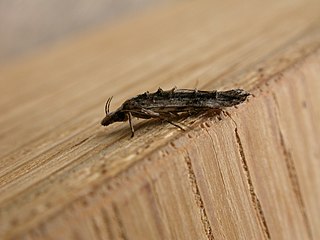
Trachydora is a genus of moths in the family Cosmopterigidae.

Ethmia is a large genus of small moths. It is the type genus of the gelechioid family Ethmiidae, which is sometimes included in Elachistidae or Oecophoridae as subfamily.

Elachista is a genus of gelechioid moths described by Georg Friedrich Treitschke in 1833. It is the type genus of the grass-miner moth family (Elachistidae). This family is sometimes circumscribed very loosely, including for example the Agonoxenidae and Ethmiidae which seem to be quite distinct among the Gelechioidea, as well as other lineages which are widely held to be closer to Oecophora than to Elachista and are thus placed in the concealer moth family Oecophoridae here.
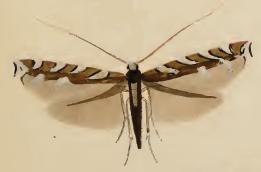
Dialectica is a genus of 22 moth species in the family Gracillariidae.
Microcolona is a genus of moths of the family Elachistidae described by Edward Meyrick in 1897.

Xyloryctidae is a family of moths contained within the superfamily Gelechioidea described by Edward Meyrick in 1890. Most genera are found in the Indo-Australian region. While many of these moths are tiny, some members of the family grow to a wingspan of up to 66 mm, making them giants among the micromoths.
Haplochrois chlorometalla is a moth in the family Elachistidae. It was described by Edward Meyrick in 1897. It is found in Australia, where it has been recorded from New South Wales.
Haplochrois thalycra is a moth in the family Elachistidae. It was described by Edward Meyrick in 1897. It is found in Australia, where it has been recorded from New South Wales.

Eretmocera is a genus of moths in the family Scythrididae.

Parametriotinae is a subfamily of moths in the family Elachistidae.













